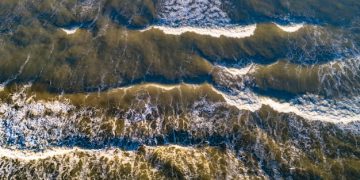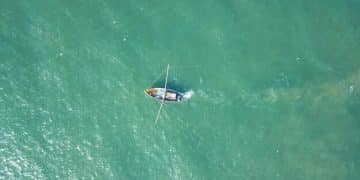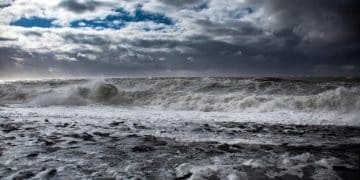Climate Change & Marine Migration in US Waters
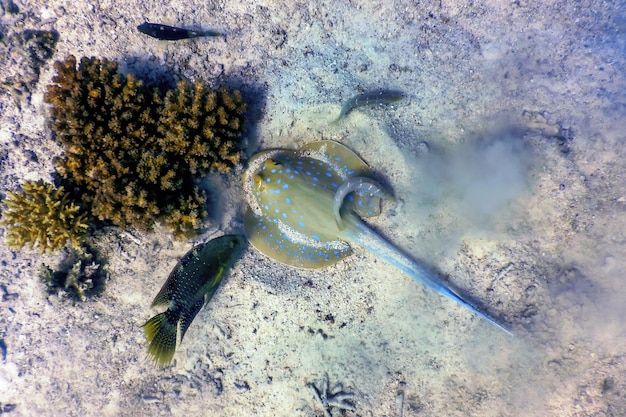
Climate change significantly alters marine species migration patterns in US waters by impacting ocean temperatures, currents, and food availability, leading to shifts in distribution, timing, and reproductive success for numerous aquatic organisms.
Understanding how does climate change affect the migration patterns of marine species in US waters? is crucial as our oceans undergo profound transformations. This complex issue impacts everything from individual fish movements to broad ecosystem dynamics, presenting significant challenges for marine life and human livelihoods alike.
The Shifting Seas: Ocean Warming and Species Redistribution
The Earth’s oceans absorb a vast amount of the excess heat trapped by greenhouse gases, leading to a phenomenon known as ocean warming. This isn’t just about a slight increase in average temperature; it’s about altering the fundamental thermal landscapes that marine species have adapted to over millennia. For many creatures, water temperature acts as a critical cue, signaling when to migrate, where to feed, and even when to reproduce.
Impact on Temperature-Dependent Species
Species with narrow optimal temperature ranges are particularly vulnerable. As waters warm, these organisms are forced to seek cooler habitats, often moving poleward or to deeper waters. This dramatic shift, often referred to as “tropicalization” in temperate zones, brings species into new territories where they may encounter different predators, prey, or environmental conditions. The implications extend beyond individual survival, affecting the entire food web.
- 🦐 Northern shifts of shrimp and crab populations in the Gulf of Maine.
- 🐠 Cod and other groundfish moving deeper or further north along the Atlantic coast.
- 🦑 Squid and other cephalopods extending their ranges into previously colder waters.
The velocity of this warming varies across different US waters. Regions like the Gulf of Maine are experiencing some of the fastest warming rates globally, leading to rapid ecosystem restructuring. This forces species to adapt quickly or face decline, impacting commercial fisheries that rely on predictable stock locations and seasonal availability. The consequences are both ecological and economic.
Furthermore, physiological stresses induced by higher temperatures can reduce growth rates, metabolic efficiency, and reproductive capacity. This means that even if a species successfully shifts its range, its overall health and ability to contribute to a sustainable population might be compromised. The changes are not uniform, creating a mosaic of impacts across the vast and varied US marine environment.
Altered Ocean Currents and Nutrient Availability
Beyond direct temperature changes, climate change also influences large-scale ocean circulation patterns. These currents are the highways of the ocean, transporting nutrients, larvae, and even entire populations across vast distances. Disruptions to these currents can fundamentally alter the pathways and timing of marine migrations, creating navigational challenges for species that rely on them.
For example, changes in the Atlantic Meridional Overturning Circulation (AMOC) can affect nutrient upwelling in critical feeding grounds, impacting the productivity of entire regions. If the food sources that migrating species depend on shift or diminish due to altered currents, their ability to complete their life cycles is severely hampered. This cascade effect can lead to malnutrition, reduced breeding success, and increased mortality rates.
The Domino Effect on Food Webs
When ocean currents change, entire food webs can be disrupted. Phytoplankton and zooplankton, the base of the marine food web, are highly sensitive to sunlight, temperature, and nutrient availability, all of which are influenced by currents. If these fundamental food sources are impacted, it reverberates up the chain, affecting the fish, marine mammals, and seabirds that prey upon them.
- 🌊 Shifting upwelling zones reducing primary productivity.
- 🐚 Disrupted transport of larval stages for sessile invertebrates.
- 🐟 Misalignment between predator feeding cycles and prey availability.
The intricate dance between ocean currents and marine life is a finely tuned system. Any alteration sends ripple effects through the ecosystem. Some species might find themselves in areas with abundant food but unsuitable temperatures, while others might encounter ideal temperatures but scarce prey. This mismatch, known as phenological asynchrony, is a significant threat to many migratory species.
Ultimately, the alteration of ocean currents represents a complex stressor that complements and exacerbates the direct impacts of ocean warming. It forces species to not only contend with hotter waters but also to navigate a fundamentally changed seascape in terms of resource access and transport. This multifaceted challenge highlights the interconnectedness of marine ecosystems and the far-reaching consequences of climate change.
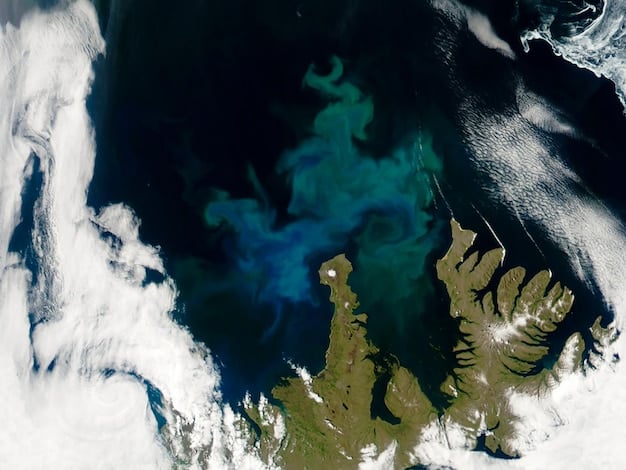
Ocean Acidification: A Silent Threat to Marine Life
The absorption of excess carbon dioxide (CO2) by the oceans leads to a decrease in seawater pH, a process known as ocean acidification. While not as immediately obvious as warming waters or altered currents, acidification poses a significant long-term threat to a wide range of marine organisms, particularly those that build shells or skeletons from calcium carbonate.
Species such as corals, shellfish, and plankton are at direct risk. Their ability to form and maintain their protective structures is compromised in more acidic waters. This can impact their growth, reproduction, and overall survival. The implications for migratory patterns are indirect but profound: if the foundational species or critical habitats are eroded, the entire ecosystem structure that supports migration is weakened.
Impacts on Navigational Cues and Sensory Perceptions
Emerging research suggests that ocean acidification can also affect the sensory perceptions of some marine species, potentially disrupting their ability to navigate. Fish, for instance, rely on chemical cues to locate spawning grounds, food sources, and even to avoid predators. Changes in ocean chemistry can interfere with these cues, making migration more difficult and perilous.
- 🐚 Reduced calcification rates in shellfish, impacting their ability to grow and reproduce.
- 🐠 Disruption of chemical cues used by fish for homing and schooling.
- 🌱 Negative effects on phytoplankton, a crucial base of the marine food web.
For species that undertake long, complex migrations, any impairment to their navigational capabilities can have dire consequences. It could lead to them straying off course, arriving at unsuitable spawning sites, or failing to find essential feeding grounds. This silent erosion of sensory abilities adds another layer of complexity to the challenges posed by climate change.
The combined effects of warming, altered currents, and acidification create a synergistic stressor cocktail for marine life. While acidification may not directly alter migration pathways in the same way as temperature or currents, its impacts on fundamental biological processes and ecosystem health make it a critical factor in the broader picture of climate change’s influence on marine migration. It weakens the very fabric of the oceanic environment that sustains these incredible journeys.
Changes in Marine Productivity and Food Web Dynamics
Migration patterns are intrinsically linked to the availability of food. Marine species migrate to find optimal feeding grounds, where prey is abundant and energy expenditure for foraging is minimized. Climate change disrupts marine productivity in several ways, from shifting the timing of phytoplankton blooms to altering the distribution of larger prey species.
Warmer waters can lead to changes in the stratification of the ocean, limiting the mixing that brings nutrient-rich deep water to the surface. This can reduce the overall productivity of primary producers like phytoplankton, which form the base of the marine food web. A decline in phytoplankton means fewer zooplankton, fewer small fish, and ultimately, a scarcity of food for larger predatory species that undertake extensive migrations.
Phenological Mismatches and Reproductive Success
One of the most insidious impacts is the occurrence of “phenological mismatches.” This refers to a decoupling of the timing of biological events, such as when a predator arrives in a feeding ground and when its prey is most abundant. For example, if warming waters cause a fish species to spawn earlier, but the zooplankton it feeds on doesn’t bloom until its usual time, the early-hatched larvae may starve.
- ⏰ Disrupted timing of seasonal plankton blooms impacting larval fish survival.
- 🐟 Reduced availability of specific prey species in historical foraging grounds.
- 🦉 Declines in seabird populations due to lack of food for their chicks.
For migratory species, these mismatches can be catastrophic. Their lengthy journeys are often timed to coincide with peak food availability at different points along their route. If these peaks shift or disappear, the energy required for migration may outweigh the benefits, leading to reduced reproductive success or even mortality. This stress on the food web not only forces species to shift their migration patterns geographically but also challenges the very energetic basis of their existence.
The intricate web of predator-prey relationships is fundamental to marine ecosystem health. Climate change, by altering productivity and creating phenological mismatches, unravels this web, placing immense pressure on species to find new food sources or dramatically change their migratory strategies. The consequences for population health and ecosystem stability are profound and far-reaching.
Extreme Weather Events and Habitat Fragmentation
Climate change is increasing the frequency and intensity of extreme weather events, such as marine heatwaves, severe storms, and prolonged droughts. These events can have immediate and devastating impacts on marine habitats and species, further complicating migration patterns. Marine heatwaves, for instance, can cause mass mortality events, push species out of their optimal temperature zones, or trigger harmful algal blooms.
Severe storms can physically damage critical habitats like coral reefs and seagrass beds, which serve as nurseries, feeding grounds, and shelter for many migratory species. When these habitats are destroyed or degraded, species lose essential waypoints and resting areas along their migratory routes, making the journey riskier and less tenable. Habitat fragmentation, caused by both direct damage and temperature shifts, limits connectivity between formerly contiguous areas.
Barriers to Movement and Increased Mortality
These extreme events can act as temporary or even permanent barriers to migration. A prolonged marine heatwave might force a species to abandon a vital feeding ground mid-migration, compelling it to seek alternative—and potentially less suitable—areas. Intense storms can disorient animals, push them off course, or directly cause mortality, especially for smaller or less resilient species.
- 🔥 Marine heatwaves causing mass mortalities and forcing rapid range shifts.
- 🌪️ Severe storms damaging critical coastal habitats and disorienting migrants.
- 🏜️ Hypoxic zones expanding, creating “dead zones” that migratory species must avoid.
Coastal development, pollution, and other human-induced stressors already contribute to habitat fragmentation. Climate change exacerbates this by adding a layer of dynamic, unpredictable environmental shifts. For species like sea turtles, which return to specific nesting beaches, rising sea levels and increased storm surge can inundate their nesting sites, further impacting their reproductive success and forcing them to find new, potentially less ideal, locations. The cumulative effect of these various stressors on marine migration is a critical concern, pushing many species to their physiological and adaptive limits.
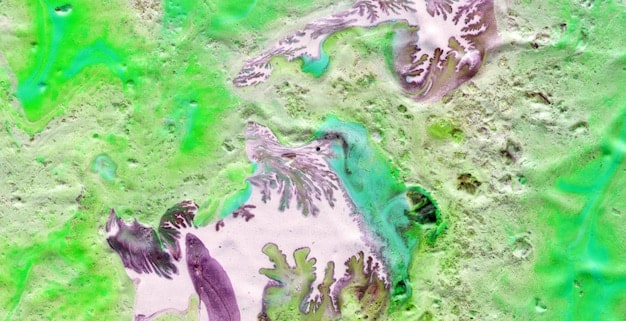
Management and Conservation Challenges in a Changing Ocean
The dynamic and often unpredictable shifts in marine species migration patterns present immense challenges for marine resource management and conservation efforts. Traditional management strategies, often based on historical distribution patterns and fixed fishing seasons, may no longer be effective in a rapidly changing ocean. Fisheries, in particular, struggle to adapt when target species repeatedly move to new locations.
Conservation strategies also face difficulties. Establishing protected areas, for example, becomes complex if the species they are designed to protect migrate out of bounds due to climate-induced range shifts. Effective management requires a fundamental rethinking of how we govern marine resources, moving towards more agile, adaptive, and ecosystem-based approaches that account for climate impacts.
Adaptive Management and International Cooperation
One key approach is adaptive management, which involves continuously monitoring changes, assessing impacts, and adjusting management strategies in response. This requires robust data collection, advanced modeling capabilities, and a willingness to revise policies frequently. Given that many marine species migrate across international boundaries or between state and federal waters, international and inter-jurisdictional cooperation is paramount.
- 📈 Developing dynamic ocean management tools to track and respond to shifting species.
- 🌐 Fostering international agreements for managing shared migratory stocks.
- 🧪 Investing in research to better understand climate impacts on marine physiology and behavior.
Furthermore, there is a growing recognition of the need for “climate-ready” marine protected areas that are designed to be resilient to climate change or to facilitate species movement. This might involve creating networks of protected areas that allow for connectivity or protecting diverse habitats that can serve as climate refugia. The challenge is immense, but the imperative to protect marine biodiversity and the livelihoods that depend on it is equally compelling.
Ultimately, addressing the impacts of climate change on marine migration patterns requires a multi-faceted approach. It combines scientific understanding, innovative technological solutions, strong policy frameworks, and unprecedented levels of collaboration among stakeholders. Without these concerted efforts, the continued shifts in marine life distribution will have profound consequences for ecosystems and human societies alike.
Future Outlook and Resilience Building
The trajectory of climate change suggests that its impacts on marine migration patterns will intensify in the coming decades. While the scale of the challenge is daunting, there are efforts focused on building resilience within marine ecosystems and supporting species’ adaptation. This involves not only mitigating greenhouse gas emissions but also enhancing the natural adaptive capacity of marine life.
One key area is reducing other human-induced stressors on marine environments. Overfishing, pollution, and habitat destruction already weaken marine ecosystems, making them more vulnerable to climate change. By reducing these local stressors, we can improve the overall health and resilience of marine populations, giving them a better chance to cope with the added pressures of a changing climate.
Restoration and Connectivity
Efforts to restore degraded coastal habitats, such as oyster reefs, mangrove forests, and salt marshes, can provide critical refugia and stepping stones for migratory species. These habitats also offer other ecosystem services, like coastal protection and carbon sequestration. Ensuring connectivity between different habitats is vital, as it allows species to move and adapt their ranges more easily.
- 🏗️ Restoring coastal wetlands and vital nursery habitats.
- 🔗 Establishing marine corridors to facilitate species movement.
- 🌊 Reducing localized pollution and overfishing pressures.
Furthermore, advances in genetic research are exploring the potential for identifying and protecting populations that exhibit higher genetic diversity or particular traits that confer resilience to warmer or more acidic conditions. These “climate-adapted” populations might play a critical role in repopulating areas as conditions change. The emphasis is on proactive measures that not only react to change but also build capacity for future adaptation.
The future of marine migration in US waters is intrinsically linked to our collective response to climate change. While species will undoubtedly continue to shift their distributions, proactive conservation and management, coupled with global efforts to reduce emissions, offer the best hope for maintaining healthy, productive, and diverse marine ecosystems. It’s a race against time, but one where every adaptation and every resilience-building effort counts significantly.
| Key Aspect | Brief Description |
|---|---|
| 🌡️ Ocean Warming | Forces species to move poleward or deeper to escape rising temperatures, altering traditional habitats. |
| Currents & Nutrients | Disrupts ocean circulation, impacting nutrient transport and food availability, leading to food web imbalances. |
| Acidification | Harms shell-forming organisms and may disrupt sensory cues, complicating navigation for migrants. |
| 🌊 Extreme Events | Marine heatwaves and storms damage habitats, creating barriers and increasing mortality during migration. |
FAQs about Climate Change and Marine Migration
▼
Ocean warming directly impacts species by making historically suitable habitats too warm. Many marine organisms have specific temperature ranges they can tolerate for survival and reproduction. As water temperatures rise, these species are compelled to move towards cooler areas, typically poleward or to deeper waters, in search of more favorable conditions for their physiological needs and life cycles.
▼
Phenological mismatches occur when the timing of ecological events, like the peak abundance of prey, shifts differently from the timing of a predator’s arrival or reproductive cycle. For marine migrants, whose journeys are often precisely timed with food availability, these mismatches mean they might arrive at feeding grounds to find scarce resources, impacting their energy reserves, growth, and overall reproductive success.
▼
While ocean acidification doesn’t directly alter migration routes, it poses indirect threats. It reduces the ability of shell-forming organisms (like shellfish and plankton) to build and maintain their shells, impacting fundamental food sources. Additionally, research suggests acidification can disrupt the sensory cues fish use for navigation, making it harder for them to find spawning grounds or suitable habitats.
▼
Adapting to shifting migration patterns presents significant challenges for US fisheries. Traditional management based on historical distributions often becomes outdated. Fisheries need to implement more dynamic, adaptive management strategies that can quickly respond to changes in species location and abundance. This requires robust data, advanced modeling, and enhanced collaboration among regional and federal management bodies to ensure sustainable practices.
▼
Conservation strategies include creating climate-ready marine protected areas that are resilient to climate impacts and facilitate species movement, such as networks of protected zones. Reducing local stressors like pollution and overfishing helps improve overall ecosystem health. Additionally, restoring critical habitats like wetlands and fostering international cooperation are vital to support the adaptation and survival of migratory marine species.
Conclusion
The interplay of climate change and marine migration patterns in US waters is a complex ecological narrative unfolding in real-time. Ocean warming, altered currents, acidification, and extreme weather events are collectively reshaping the marine landscape, forcing species to adapt their age-old migratory rhythms. These shifts propagate through ecosystems, challenging food webs and demanding innovative approaches to marine conservation and fisheries management. While the challenges are formidable, understanding these dynamics is the first step towards building resilient marine environments and ensuring the continued vitality of the diverse life within our oceans.
